
Notolabrus gymnogenis Crimsonbanded Wrasse
Notolabrus gymnogenis, commonly known as the crimson banded wrasse, is a species of fish in the family Labridae. This colourful fish is endemic to Eastern Australia. This colourful fish is endemic to Eastern Australia.

Crimsonbanded Wrasse Portrait of a male Crimsonbanded Wr… Flickr
The four key targeted species were snapper, grey morwong, pearl perch, and venus tuskfish. Two of the bycatch species: southern Maori wrasse Opthalmolepis lineolata and crimson banded wrasse Notolabrus gymnogenis; are among the most abundant labrid species in the SIMP (Malcolm et al., 2011) and are sometimes kept. The two other bycatch species.

Crimsonband Wrasse, Notolabrus gymnogenis (Günther, 1862) The Australian Museum
The Crimson-Banded Wrasse (Notolabrus gymnogenis) of the family Wrasse (Labridae) is commonly seen in both its adult form and the juvenile form, which can look quite different and confused as separate fish species. These fish are common in Sydney but typi
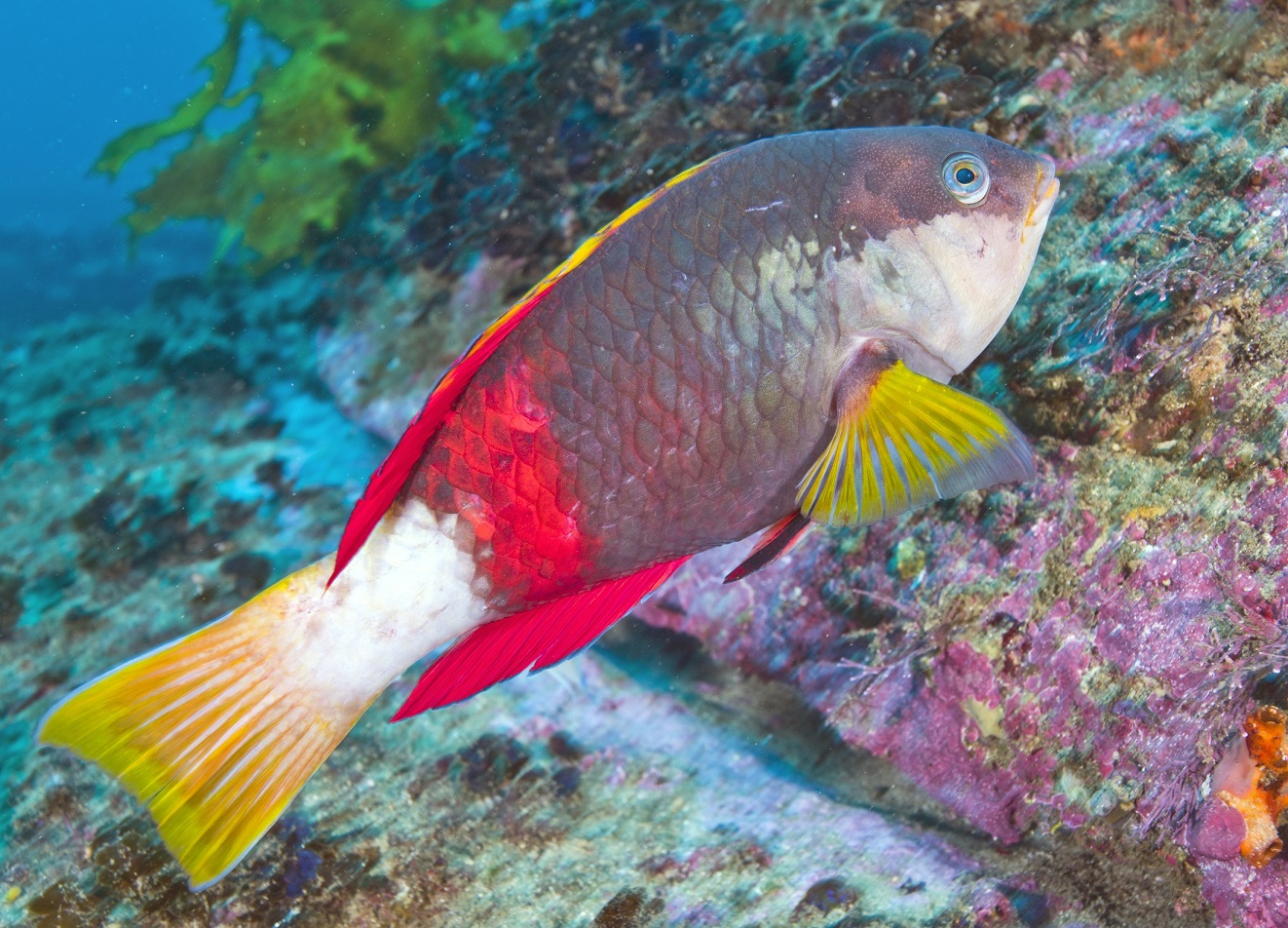
maori wrasse
Ayan Banerjee on 03 September 2021 ; Updated on 20 October 2022 Sub-edited by Jacob Fitzbright ; Fact-checked by Sonali Rawat 6 mins to read Contents Banded wrasse (Notolabrus fucicola) are native to the southeast Indian Ocean, the Pacific Ocean, and eastern parts of New Zealand and Australia.

Curious Crimson banded wrasse Notolabrus gymnogenis m… Flickr
1. 1. Summary 2. Notolabrus gymnogenis, commonly known as the crimson banded wrasse, is a species of fish in the family Labridae. This colourful fish is endemic to Eastern Australia.

Crimsonbanded Wrasse A male Crimsonbanded Wrasse (Notola… Flickr
Information such as weight, length, distribution and picture of Crimsonband Wrasse.

Crimsonbanded Wrasse A female Crimsonbanded Wrasse (Noto… Flickr
Notolabrus gymnogenis (Crimson Banded Wrasse) is a species of ray-finned fishes in the family Labridae. Individuals can grow to 23 cm. They have sexual reproduction. They rely on pectoral fin oscillation to move around.

Crimson banded wrasse Notolabrus gymnogenis This female … Flickr
Notolabrus gymnogenisis commonly referred to as Banded Parrotfish, Banded Wrasse, Blue Wrasse, Kelpie, Purple Parrotfish, Purple Wrasse, Southern Wrasse, Winter Bream, Yellow-saddled Wrasse, Crimson-banded Parrot-fish, Crimson-banded Wrasse, Spotted Rainbowfish, White-spotted Rainbow-fish, Crimsonband Wrasse, Crimson banded wrasse. Difficulty in the aquarium: There are no reports available yet.
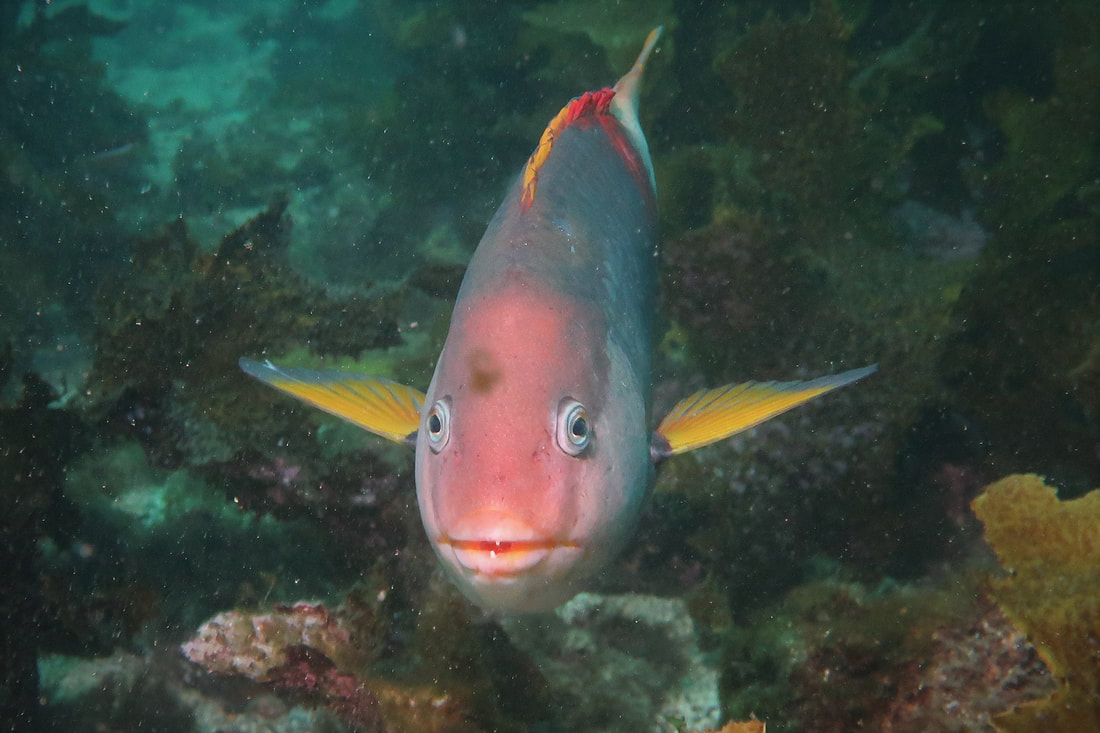
Crimon Banded Wrasse SydneyDives
Smallscale Scorpionfish, Receive the latest news on events, exhibitions, science research and special offers. Crimsonband Wrasse, Notolabrus gymnogenis (Günther, 1862)

Crimson banded wrasse Notolabrus gymnogenis Fairy Bower John Turnbull Flickr
Atlas of Living Australia species page for the Notolabrus gymnogenis
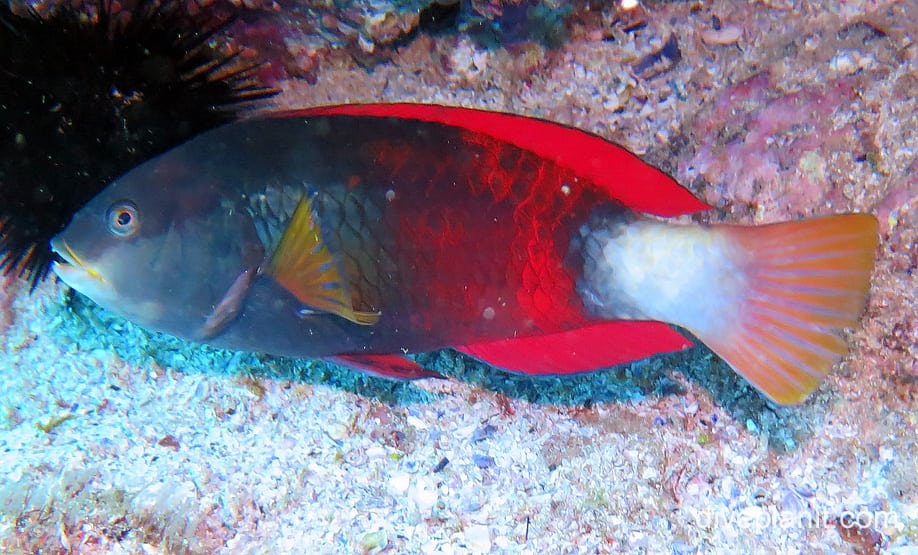
Crimson Banded Wrasse (Notalabrus gymnogenis) NSW
Crimsonband Wrasse Crimsonband Wrasse Notolabrus gymnogenis 1 Summary 2 Notolabrus gymnogenis, commonly known as the crimson banded wrasse, is a species of fish in the family Labridae. This colourful fish is endemic to Eastern Australia. Sources and Credits (c) Erik Schlogl, some rights reserved (CC BY-NC), uploaded by Erik Schlogl

Notolabrus gymnogenis Crimsonbanded Wrasse
A little taste of our recent dive at pacific palms - hiked 15 minutes to the spot, jumped in and dove down to check a hole for lobsters, and instead I manage.

Notolabrus gymnogenis
Rainbow wrasse with spring onion, white wine and cream Serves 2 Ingredients I large wrasse or seabass (around 750g) 1 knob of salted butter 5 spring onions 1/2 glass white wine 1/2 pint single cream Salt and cracked black pepper to season Method Descale and fillet your fish. Melt a large knob of butter in a hot frying pan.

Crimson banded wrasse (male) Notolabrus gymnogenis Aquarium fish, Wrasse, Fish pet
Like many other wrasses, the Crimsonband Wrasse is variable in colour and changes sex from female to male during its life. Juveniles are greenish brown with rows of white spots along the sides. Females are reddish to brownish-orange with rows of white spots along the sides.
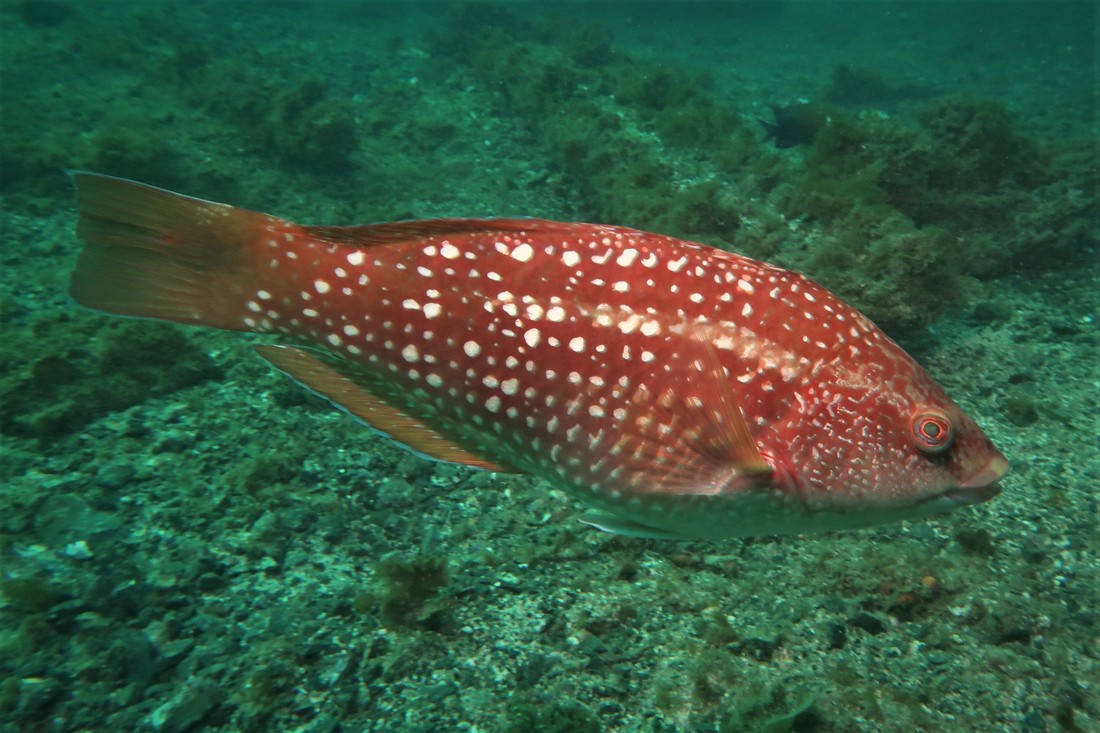
Crimon Banded Wrasse SydneyDives
The juvenile crimson-banded wrasse is greenish-brown with some white spots on the side. Larger wrasse hide in crevices whilst the juveniles hide under the sand at the bottom. Wrasse are active during the day and rest at night. You'll find these fish in small groups near coastal shelves hiding in and out of crevices.
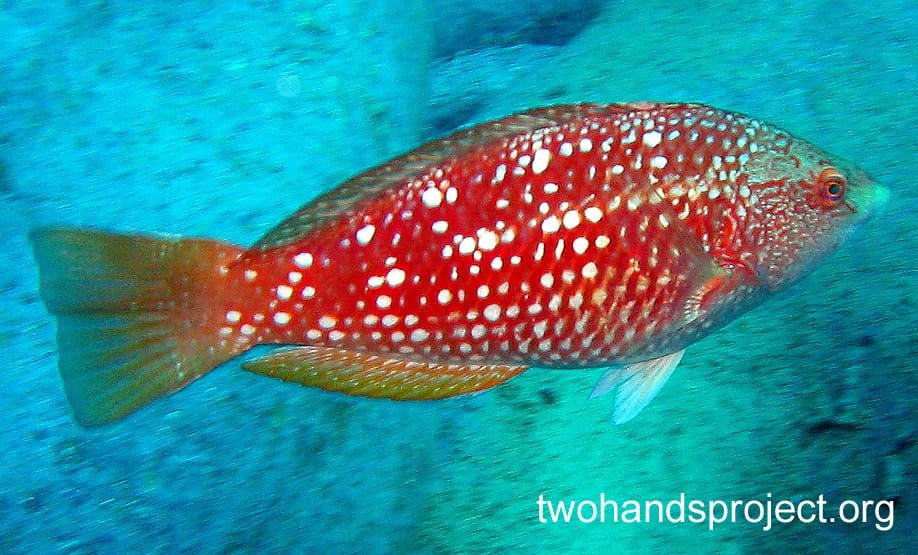
Crimson Banded Wrasse (Notalabrus gymnogenis) NSW
hi guys. i was out fishing the 7 mile beach on the perfect south coast today and we cought a few leather jackets and a couple of snapper. we also fished in close to a rock platform.and we where catching these 2 types of fish 1 after another it was a joke.can you eat them?and if so are they any go.